Effective Strategies to Discourage Stink Bugs and Maintain a Pest-Free Environment


Preventive Pest Control Strategies
When it comes to deterring stink bugs and other pests from infiltrating your living space, implementing preventive pest control strategies is crucial. To begin with, securing the exterior of your house is essential. Seal any cracks or crevices that may serve as entry points for stink bugs. Additionally, make sure to clear any debris around your property, as it can attract unwanted pests. By taking these proactive measures, you create a barrier that discourages stink bugs from entering your home.
In terms of yard maintenance, establishing essential routines is key to keeping your outdoor space pest-free. Regularly mowing the lawn, trimming vegetation, and removing any stagnant water sources can significantly reduce the risk of stink bug infestations. Furthermore, incorporating methods such as planting pest-repelling plants and using natural deterrents can help safeguard your yard against these pesky bugs.
Maintaining indoor cleanliness is another integral aspect of pest control. Adopt expert cleaning techniques to eliminate potential hiding spots for stink bugs. By keeping your indoor environment clutter-free and sanitary, you effectively minimize the chances of pest infestations. Paying attention to areas like basements, attics, and storage spaces is particularly important, as these are common hiding spots for stink bugs.
Proper garbage disposal is non-negotiable when it comes to pest prevention. Make sure to dispose of household waste promptly and correctly to avoid attracting stink bugs and other pests. By establishing efficient waste disposal methods, you not only reduce the risk of infestations but also contribute to creating a cleaner and healthier living environment.
In addition to these fundamental preventive strategies, consider exploring innovative approaches to safeguard your home against stink bugs. Whether it's utilizing electronic repellent devices, implementing natural deterrents, or investing in pest-control services, being proactive and adaptable in your pest prevention efforts can significantly minimize stink bug intrusion.
Understanding Stink Bugs
Stink bugs, scientifically known as Pentatomidae, are notorious pests that can wreak havoc on both homes and gardens. Understanding the behavior and characteristics of stink bugs is crucial in effectively combatting their invasion. By delving into the intricacies of stink bugs, individuals can develop targeted strategies to deter these pests successfully.
Identifying Stink Bugs
Physical Characteristics
When it comes to physically identifying stink bugs, one of the most notable features is their shield-shaped body, typically ranging in color from green to brown. This unique shape and coloration aid stink bugs in camouflaging among foliage, making them challenging to detect. Another key physical characteristic is their piercing-sucking mouthparts, which they use to feed on plants, leading to potential crop damage.
Behavior Patterns
Understanding the behavior patterns of stink bugs is essential in predicting their movements and habits. Stink bugs are known for their aggregation behavior, often forming clusters in warm indoor spaces during the colder months. By comprehending their attraction to light sources and heat, homeowners can strategically place traps or deterrents to intercept these pests before they infiltrate living areas. Additionally, being aware of their reproductive cycles can help instigate control measures at critical times to prevent population surges.
Preventive Measures
Stink bugs can be a persistent nuisance, infiltrating homes and gardens alike. In this comprehensive guide on discouraging stink bugs, preventive measures serve as the first line of defense against these unwelcome guests. By implementing strategic tactics to deter stink bugs, you can safeguard your living space and flora from their destructive tendencies. Preventive measures encompass various approaches, each vital in maintaining a pest-free environment.
Sealing Entry Points
Repairing Cracks and Gaps
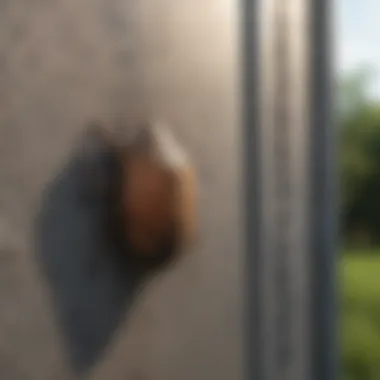
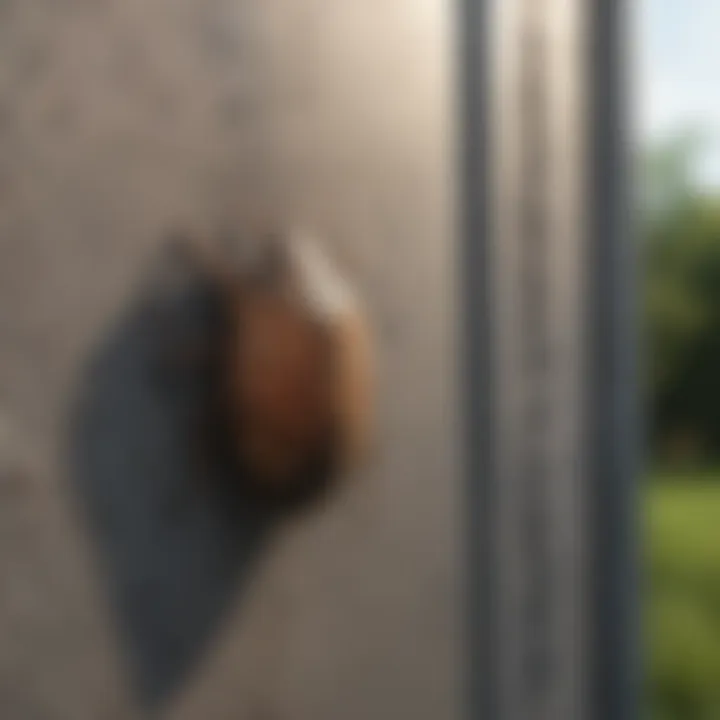
Repairing cracks and gaps within your home is an essential aspect of stink bug prevention. These minute openings serve as entry points for stink bugs seeking shelter and sustenance. By meticulously inspecting and repairing any crevices, you effectively block stink bugs' access into your residence. The thorough sealing of cracks and gaps not only hinders stink bugs' entry but also enhances the overall insulation and structural integrity of your property. Emphasizing the importance of this practice in the comprehensive guide underscores its efficacy in mitigating stink bug infestations.
Installing Screens
Installing screens on windows and doors acts as a physical barrier against stink bugs while allowing ventilation and natural light into your living space. Screens serve as a protective shield, preventing stink bugs from infiltrating through openings. The fine mesh of screens acts as a hindrance without obstructing airflow, maintaining a breathable environment within your home. Incorporating screens as part of the preventive measures outlined in this guide showcases its practicality and efficiency in stink bug deterrence.
Maintaining Hygiene
Proper Waste Management
Effective waste management plays a pivotal role in stink bug prevention by eliminating potential food sources that attract these pests. Proper disposal of organic waste reduces the appeal of your property to stink bugs searching for nourishment. By securely sealing trash bins and promptly removing accumulated garbage, you reduce the likelihood of attracting stink bugs into your surroundings. The emphasis on proper waste management in the guide highlights its significance in creating an inhospitable environment for stink bugs.
Regular Cleaning
Routine cleaning practices contribute significantly to stink bug deterrence by eliminating hiding spots and removing debris that may attract these pests. Regular vacuuming, dusting, and decluttering not only enhance the cleanliness of your living space but also disrupt stink bugs' habitats. Consistent sanitation measures reduce the presence of stink bug attractants, discouraging their establishment within your home. Detailing the importance of regular cleaning in the guide underscores its impact on maintaining a stink bug-free environment.
Natural Remedies
Using Essential Oils
Employing essential oils, such as peppermint or citrus blends, as natural repellents can aid in deterring stink bugs from infesting your home. The strong scents of essential oils disrupt stink bugs' olfactory receptors, deterring them from entering treated areas. Furthermore, essential oils serve as eco-friendly alternatives to chemical insecticides, minimizing environmental impact. Integrating essential oils into your pest control regimen, as detailed in this guide, showcases their efficacy in repelling stink bugs without harmful side effects.
Planting Insect-Repellent Plants
Cultivating insect-repellent plants, like marigolds or lavender, around your garden serves as a proactive measure against stink bugs and other pests. These plants emit natural compounds that repel insects, including stink bugs, effectively reducing infestation risks. Additionally, planting insect-repellent flora adds aesthetic value to your garden while contributing to a biodiverse ecosystem. Highlighting the benefits of planting insect-repellent plants in the guide emphasizes their dual role in beautification and pest control, making them a valuable asset in stink bug deterrence.
Deterrents for Stink Bugs
As we delve into the realm of deterring stink bugs, we aim to grasp the significance of implementing effective strategies to combat these intrusive pests. In this article, the focus on deterrents for stink bugs is paramount, as a proactive approach can safeguard your home and garden from potential infestations. By exploring specific elements such as homemade and commercial repellents, we aim to provide readers with a comprehensive arsenal against stink bugs.
Homemade Repellents
Neem Oil Spray
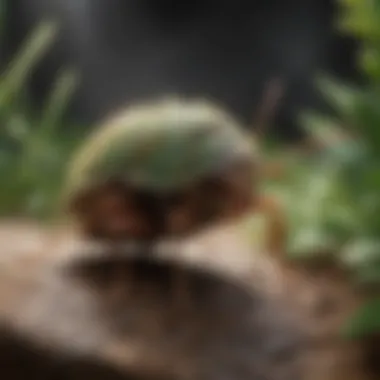
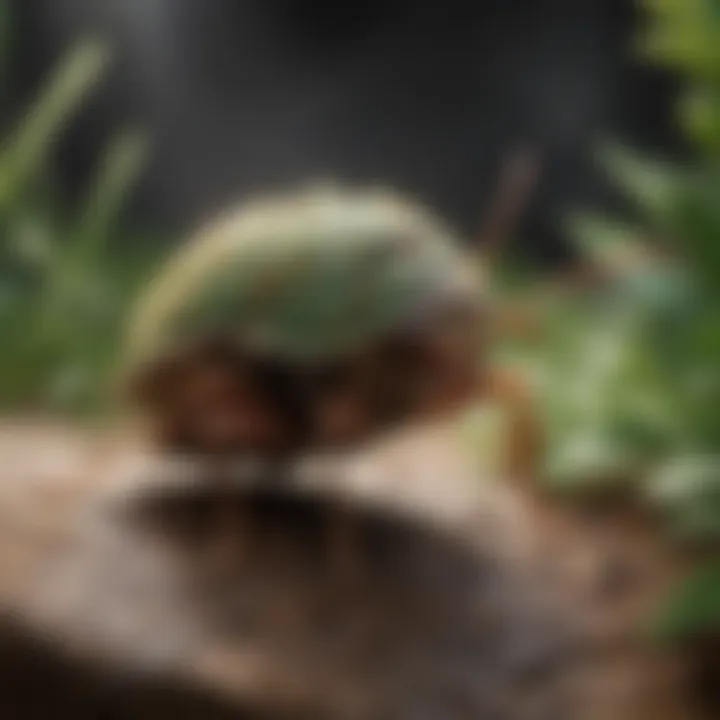
When considering the efficacy of neem oil spray as a deterrent for stink bugs, its natural properties come to the forefront. Neem oil, derived from the neem tree, is known for its pest-repelling qualities. Its key characteristic lies in its ability to disrupt the life cycle of insects, making it a popular choice for organic pest control methods. The unique feature of neem oil spray is its effectiveness in targeting a wide range of pests while being environmentally friendly. However, one must remain cautious of its potential adverse effects on non-target insects in the ecosystem.
Garlic and Pepper Solution
Delving into the realm of homemade repellents, the garlic and pepper solution emerges as a potent ally. This concoction harnesses the natural repelling properties of garlic and pepper to deter stink bugs effectively. The key characteristic of this solution is its strong odor, which acts as a natural deterrent against pests. Its unique feature lies in its versatility, as it can be easily concocted at home without the need for harmful chemicals. However, the strong scent may be a drawback for those sensitive to odors.
Commercial Repellents
Pyrethrin-Based Sprays
Turning our attention to commercial repellents, pyrethrin-based sprays stand out for their insecticidal properties. Pyrethrin, derived from chrysanthemum flowers, is a potent insecticide that targets a variety of pests, including stink bugs. The key characteristic of pyrethrin-based sprays is their fast-acting nature, providing immediate relief from pest infestations. Its unique feature lies in its low toxicity to humans and pets, making it a safer alternative to harsh chemicals. However, continual use may lead to insect resistance over time.
Diatomaceous Earth
Exploring the realm of commercial repellents, diatomaceous earth emerges as a versatile and effective deterrent against stink bugs. This naturally occurring substance is renowned for its abrasive properties, which can dehydrate and eliminate pests upon contact. The key characteristic of diatomaceous earth is its non-toxic nature, making it a popular choice for organic pest control. Its unique feature lies in its multi-functional use, serving not only as a repellent but also as a soil amendment for plants. However, caution must be exercised while handling diatomaceous earth, as inhaling the fine particles may pose risks to respiratory health.
Garden Protection
In the realm of pest control, garden protection plays a crucial role in maintaining a healthy and thriving outdoor space. When focusing on deterring stink bugs, safeguarding your garden becomes paramount to prevent infestations and preserve the vitality of your plants. Garden protection not only serves as a preemptive measure but also promotes a sustainable and eco-friendly approach to pest management, aligning with the overall theme of this guide.
Crop Rotation
Crop rotation is a time-honored agricultural technique that contributes significantly to garden protection. By rotating crops seasonally, you disrupt the lifecycle of pests like stink bugs, reducing their prevalence and impact on your garden. Embracing crop rotation not only enhances soil health and productivity but also mitigates pest problems naturally without the need for harmful chemicals.
Beneficial Insects
Within the realm of crop rotation, beneficial insects emerge as unsung heroes in combating stink bugs and other pests. These helpful creatures, such as ladybugs and lacewings, prey on harmful insects like stink bugs, shielding your crops from damage. Their voracious appetite for pests makes them a popular and effective choice for organic pest control strategies. One key characteristic of beneficial insects is their ability to adapt and thrive in diverse garden environments, providing consistent pest management benefits.
Trap Crops
Another integral aspect of crop rotation is the use of trap crops, which are plants specifically grown to attract pests away from primary crop plants. This diversionary tactic lures stink bugs to designated trap crops, sparing your main plants from infestation and damage. Trap crops act as sacrificial offerings, drawing pests away from valuable garden produce and towards easily manageable targets. Despite the added effort of maintaining trap crops, their unique feature of protecting essential plants makes them a valuable asset in the fight against stink bugs.
Physical Barriers
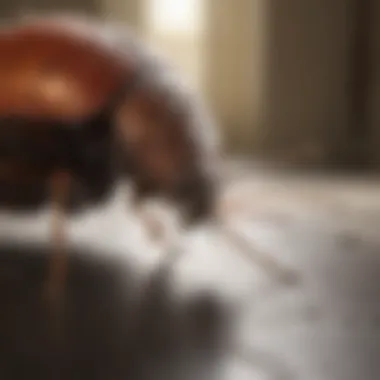
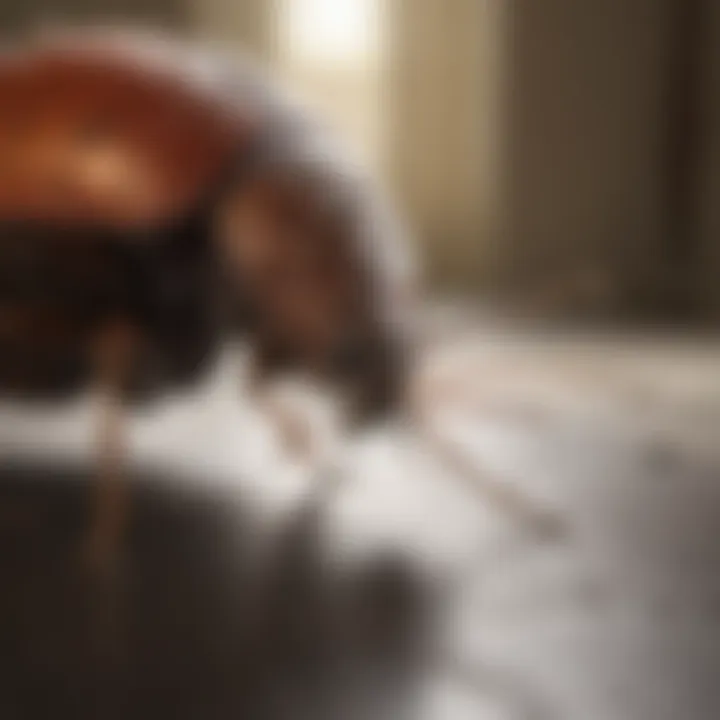
In tandem with crop rotation, deploying physical barriers forms a defensive line against stink bugs and other garden invaders. Row covers and netting serve as tangible shields, preventing pests from accessing vulnerable plants and disrupting the garden ecosystem. These barriers not only deter stink bugs but also safeguard plants from adverse weather conditions and other external threats.
Row Covers
Row covers, made of lightweight materials like garden fabric, are effective in creating a protective barrier around plants. They shield crops from stink bugs while allowing sunlight and water to nurture plant growth. The key characteristic of row covers lies in their versatility and ease of use, making them a popular choice for both novice and experienced gardeners. Despite their advantages in pest control, row covers may hinder pollination in certain crops, requiring strategic placement and monitoring.
Netting
Netting, a sturdy mesh material, serves as another valuable physical barrier to deter stink bugs and insects from reaching plants. Its durability and flexibility make it an excellent choice for covering larger garden areas or individual plants requiring protection. The unique feature of netting is its ability to provide comprehensive coverage without impeding airflow or sunlight essential for plant health. While netting offers effective pest control, occasional inspection is necessary to prevent entrapment of beneficial insects and ensure optimal plant growth.
Professional Pest Control
Professional pest control plays a crucial role in ensuring the effective management and eradication of stink bugs from your home and garden. While DIY methods can be attempted, there are instances where the expertise and precision of professional pest control services are required to tackle severe infestations. These services offer a comprehensive approach to pest management that goes beyond what typical home remedies can achieve.
By enlisting the help of professional pest control providers, homeowners can benefit from the experience and knowledge that these experts bring to the table. They are equipped with the latest tools, techniques, and treatments to address stink bug infestations effectively. Professional pest control services follow strict guidelines and safety measures to ensure that pests are eliminated without causing harm to the environment or residents.
One of the key benefits of professional pest control is the customized approach they provide. These experts conduct thorough inspections to identify the root cause of the infestation and develop targeted treatment plans to combat stink bugs effectively. Moreover, professional pest control services offer ongoing maintenance programs to prevent future infestations and ensure long-term pest management.
When considering professional pest control, it is essential to research and choose reputable providers with a track record of success in handling stink bug infestations. A reliable pest control service will offer environmentally friendly options that align with sustainable practices and promote eco-conscious pest management.
Overall, professional pest control serves as a reliable and efficient solution for homeowners seeking to tackle stink bug infestations effectively and maintain a pest-free environment.
Seeking Expert Help
When to Consult a Pest Control Service
Knowing when to consult a pest control service is essential in effectively managing stink bug infestations. While minor pest issues can be addressed using DIY methods, certain signs indicate the need for professional intervention. These signs include persistent pest activity despite home remedies, extensive property damage caused by stink bugs, or the presence of multiple pests in and around the household.
Consulting a pest control service is particularly beneficial when stink bug populations have grown uncontrollably, leading to significant disruptions in daily life. Professional pest control services have the expertise to identify the extent of the infestation, develop precise treatment strategies, and implement targeted solutions to eradicate stink bugs effectively.
Additionally, professional pest control services employ environmentally friendly options that prioritize the safety of residents and the environment. These eco-conscious approaches ensure that pest management is conducted responsibly, without compromising on effectiveness. By consulting a pest control service at the right time, homeowners can prevent stink bug infestations from escalating and protect their living spaces from further damage.
Choosing Environmentally Friendly Options
Opting for environmentally friendly pest control options aligns with the growing trend towards sustainable practices and eco-friendly solutions. When choosing environmentally friendly options for stink bug management, homeowners contribute to reducing the overall environmental impact of pest control measures and support a healthier ecosystem.
Environmentally friendly pest control solutions involve the use of non-toxic products, natural remedies, and eco-friendly techniques to deter and eliminate stink bugs. These approaches prioritize the well-being of beneficial insects, wildlife, and the environment as a whole, promoting a harmonious balance between pest management and conservation.
One of the key characteristics of environmentally friendly options is their minimal impact on non-target organisms and the surrounding ecosystem. By opting for green pest control methods, homeowners minimize the risk of harm to beneficial insects, plants, and wildlife, preserving the natural balance of their environment.
Choosing environmentally friendly options for stink bug management not only safeguards the environment but also fosters a healthier living space for residents. These sustainable practices contribute to sustainable pest management and promote long-term ecological stability, making them a prudent choice for homeowners looking to protect their homes and gardens while prioritizing environmental responsibility.



